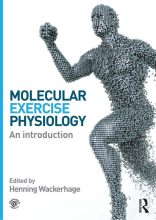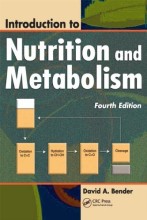Summary: How The Immune System Works Sixth Edition | 9781119542124 | Lauren Sompayrac
- This + 400k other summaries
- A unique study and practice tool
- Never study anything twice again
- Get the grades you hope for
- 100% sure, 100% understanding
Read the summary and the most important questions on How the immune system works sixth edition | 9781119542124 | Lauren Sompayrac
-
1 An overview
This is a preview. There are 21 more flashcards available for chapter 1
Show more cards here -
What are the main functions of the immune system
Protection against infectious microbes, "non-self"- intracellular (viruses, some bacteria and parasites)
- extracellular (most bacteria and parasites, fungi)
protection against modified "self"- cancer/tumor cells or transformed cells
-
2 the innate immune system
This is a preview. There are 12 more flashcards available for chapter 2
Show more cards here -
Other complement actions (/system functions)
- Part of the C3b proteins attached to the invaders surface can be cleaved by other serum proteins to iC3b
- this iC3b will no longer participate in making a MAC but will enable phagocytes to bind (they have receptors for iC3b)
- C3b/C5b are involved in positive feedback and MAC
- C3a/C5a --> chemo-attractants (to attract macrophages) called anaphylatoxins (anaphylactic shock)
- Part of the C3b proteins attached to the invaders surface can be cleaved by other serum proteins to iC3b
-
4 kenmerken/eigenschappen van Neutrophils
- 20.000.000.000 neutrophils are circulating in your blood
- Kill things and break stuff
- Short lived (otherwise they break too much!)
- No antigen presentation
-
Waaneer worden de NK cels actief
- Als er geen MHC class I molecuul aanwezig is
- Als er activating ligands aanwezig zijn op de cel [signalling the cell is stressed]
- NK cell circuleren in het bloed en zijn net als neutrophils 'on call' and worden 'opgeroepen' zodra ze nodig zijn.
- Als er geen MHC class I molecuul aanwezig is
-
Which of the two pathways, lectin or alternative pathway, is more specific?
The lectin pathway is more specific. This pathway can be considered as "smart bombs" whereas the alternative pathway are "random bombs" -
How do neutrophils kill invaders?
Neutrophils contain pre-made chemicals in their granules, that destroy invaders. There are two ways in how these granules with chemicals are used:- granules can fuse with phagosome. The chemicals will destroy the phagocytosed pathogen
- granules can be releasing in the surrounding of the neutrophil, destroying infecting tissue. The disadvantage is that other tissue will be damaged as well.
-
3 B Cells and antibodies
This is a preview. There are 18 more flashcards available for chapter 3
Show more cards here -
Kenmerken/eigenschappen van B cell receptor (BCR)
- B cells are born in the bone marrow
- 1.000.000.000 B cells are born each day!
- during development each B cell selects its heavy and light chain that make the BCR
- the BCR is almost identical ti the antibodies this B cell can produce (antibodies lack the transmembrane anchor, they are released)
- B cells are born in the bone marrow
-
What is the function of the Igalfa and Igbeta molecules?
The Hc and Lc that recognise the epitope of the cognate antigen, hang on the outside of the cell. Only a few amino acids of these proteins are on the inside of the cell. This is way too short for properly signaling to the nucleus.
Therefore, the BCR has it's second part on the inside of the cell. The Igalfa and Igbeta proteins don't see what's going on, but they can signal to the nuclear what happens outside the cell. -
Can you give two advantages of T cell-independent activation, relative to T cell-dependent activation?
Rapid, since the B cell doesn't need to wait for the T cell to be activated
Wider target: not only reaction against proteins, but also carbohydrates and fat -
After being activated, the B cells are ready for the next step in their life: maturation!we can divide this in 3 steps:
- Class switching
- somatic hypermutation
- Career choice
- Class switching
- Higher grades + faster learning
- Never study anything twice
- 100% sure, 100% understanding






























